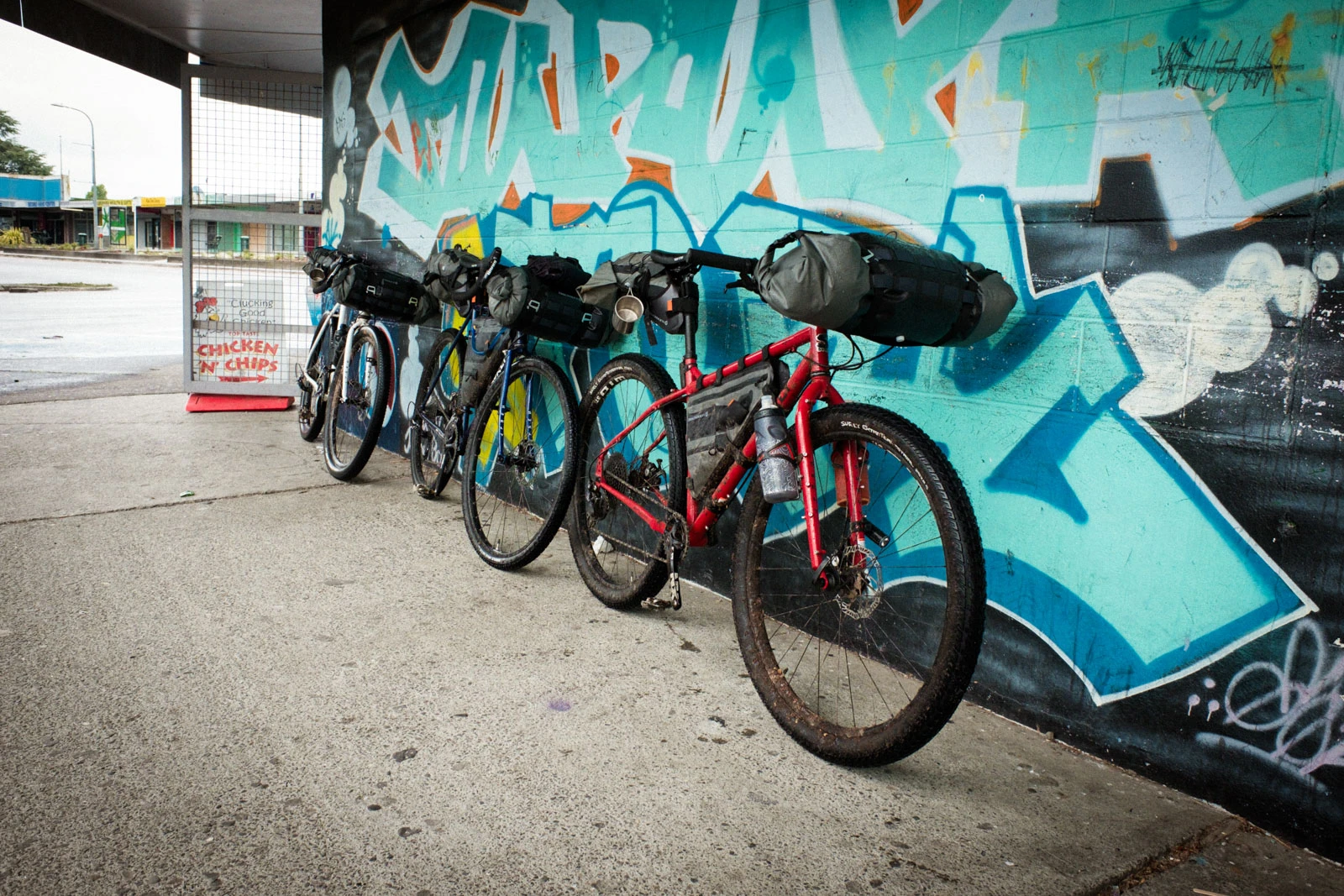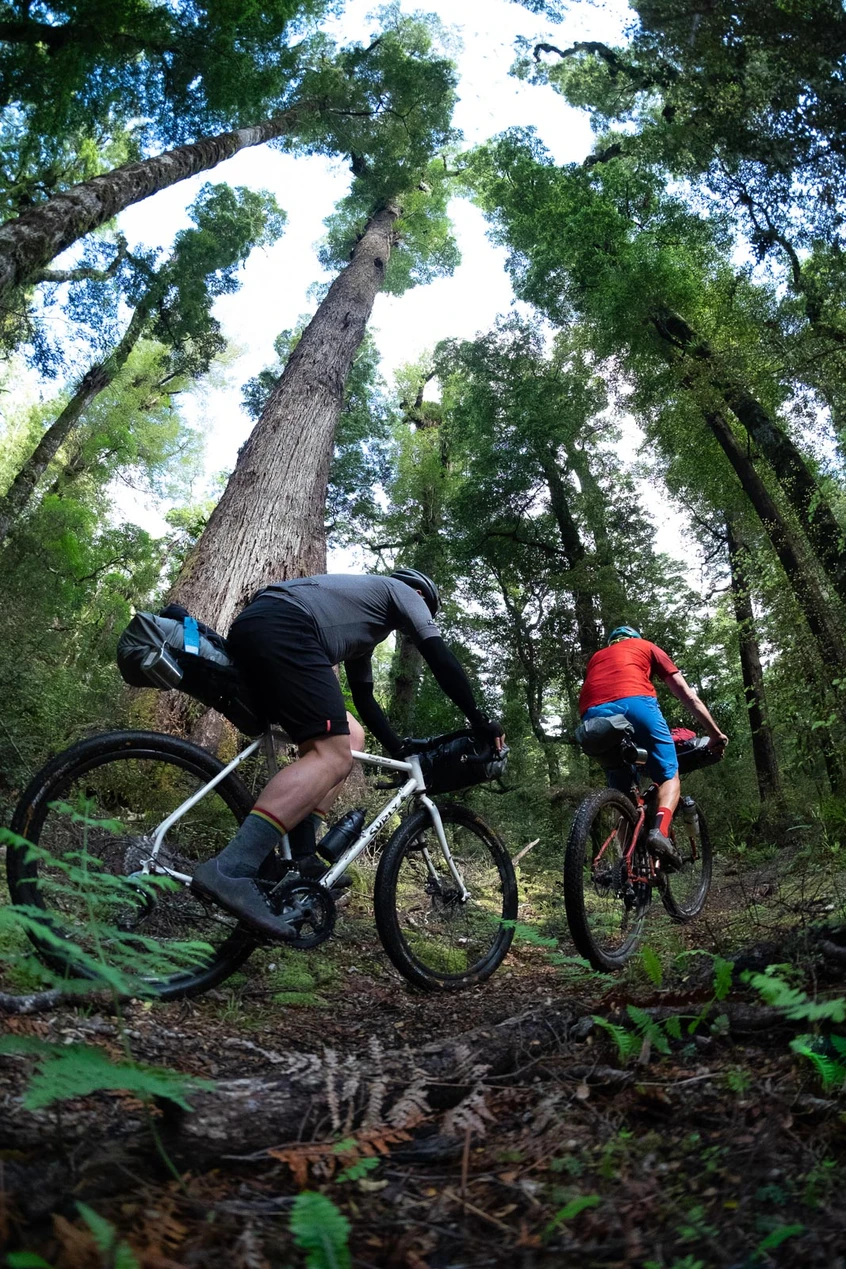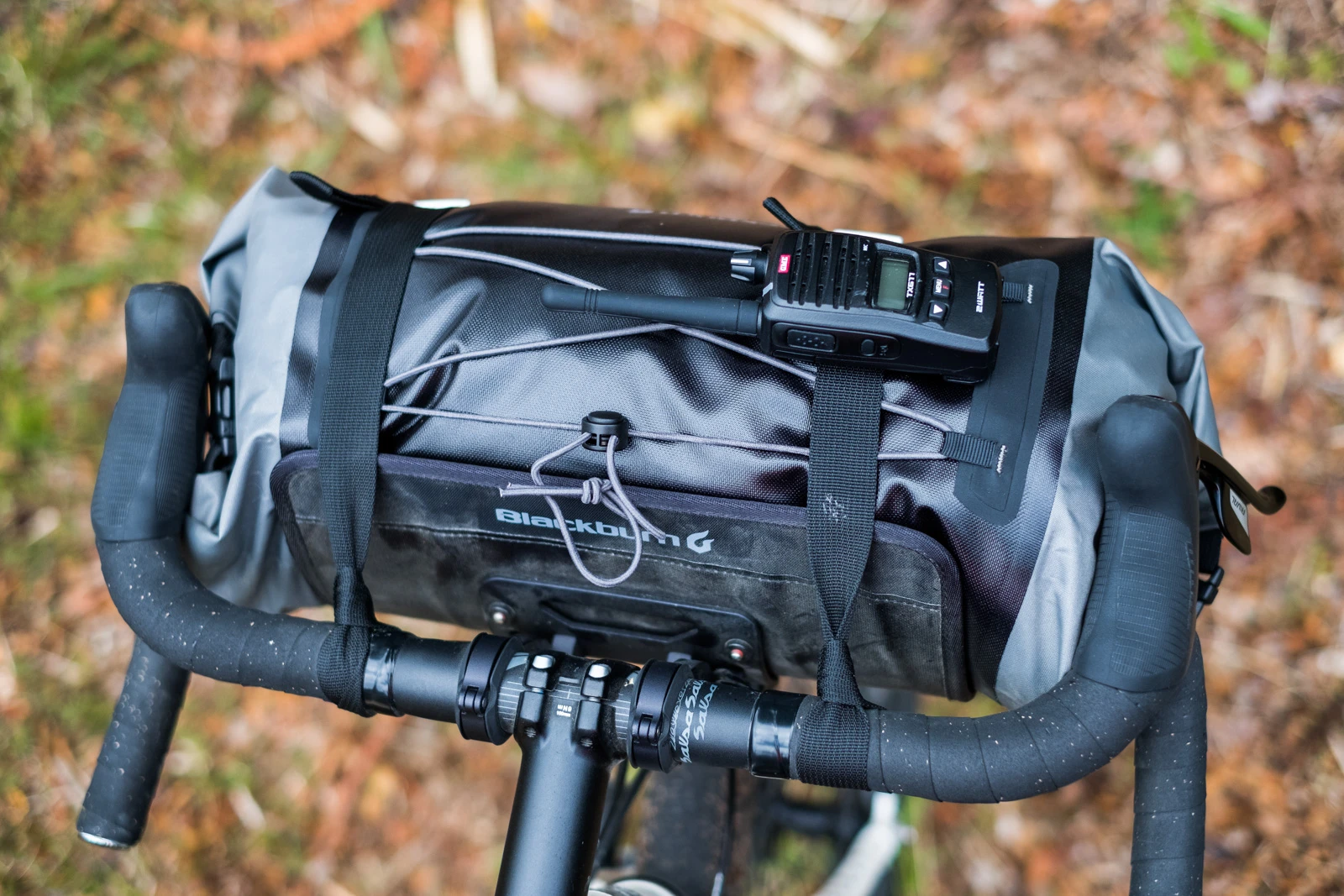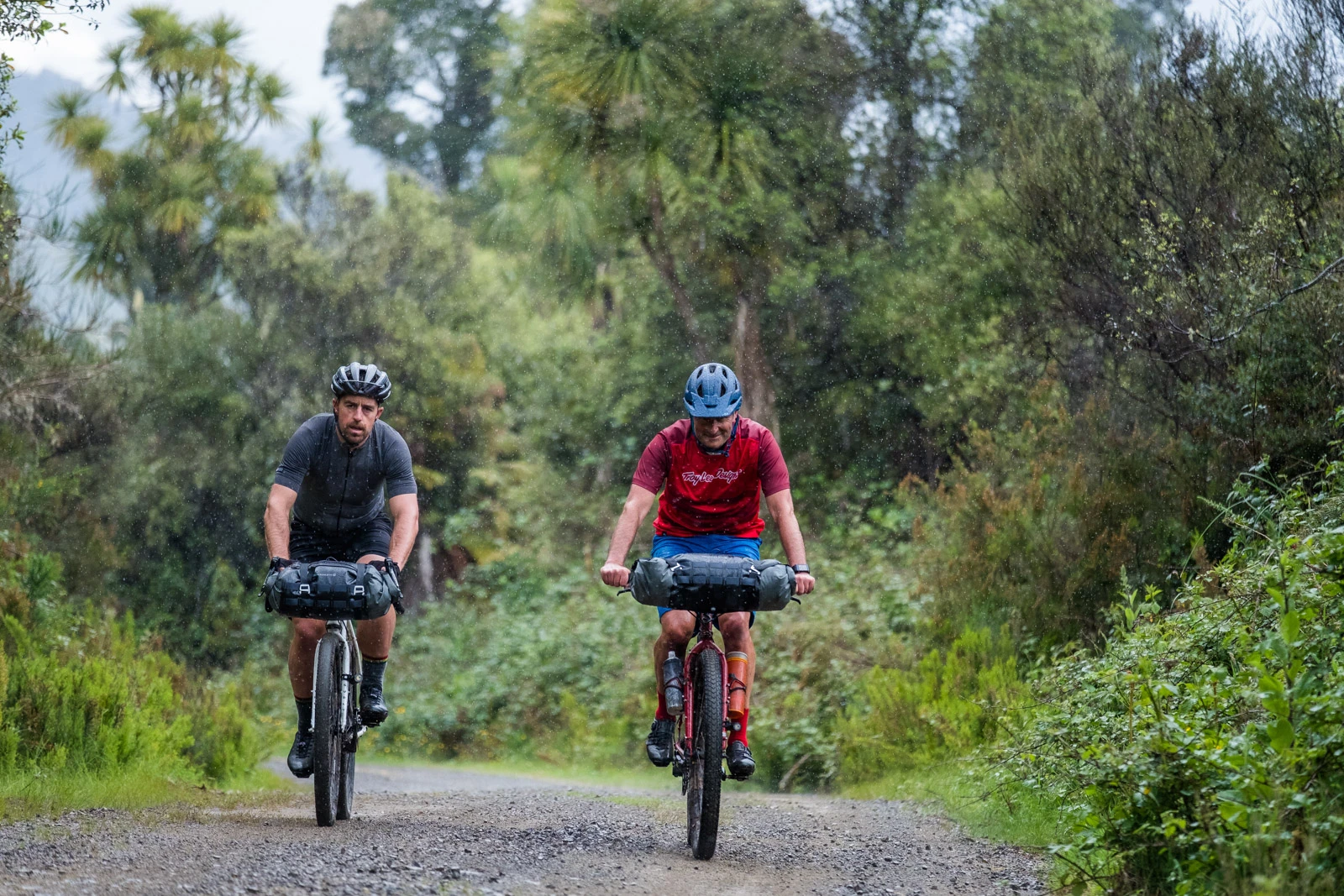Words and Images: Nick Lambert
Although Blackburn has made the Outpost series of bikepacking bags for a while now, the new Outpost Elite range is a noticeable step up in quality and design. The line is comprised of three products—handlebar roll, saddle pack and frame bag—and I’ll cover each one in turn. Before getting to that though, there are a few aspects that apply to all the Outpost Elite items.
Waterproof surfaces, welded seams and lightweight materials. A whole lot of key bikepacking requirements in that previous sentence. I pushed the use of the bags and exceeded the capability of the saddle bag’s material—but more on that in due course. (And that’s not a reflection of the material’s quality, but on my overly ambitious payload. It will make sense when you read what I carried in it.)
I’ll start with the Outpost Elite Frame Bag as it’s the product I’ll have the least use for. Not because it’s any less capable than a handlebar roll or saddle bag, but because from a style point of view I’ll only use it when it’s really necessary and I’ve already stuffed my handlebar and saddle bags to their limits.

My experience with the frame bag was nothing less than perfect. Long Velcro attachment straps mean it doesn’t matter if the bag doesn’t precisely fit a given frame; it will still be able to fasten securely in place. The inclusion of multiple mounting points for said attachment straps allows for unconventional use as well, if you happen to be running a non-standard frame or attachment setup for any reason.
I’ve run the large bag on frames ranging from 55cm to 58cm. It’s also available in smaller sizes. The size large boasts a little under seven litres of storage, which, apart from the sheer volume, was useful for its shape and accessibility. I was easily able to fit my tent in the bag; such is the length of its internal compartment. The main compartment also features an adjustable Velcro-attached divider, separating the area into two sections if required. I simply pushed the divider out of the way to fit my tent. Separate zippers—one at the top and another lower down on the right-hand side—allow independent access to the storage area, the lower one being particularly useful if the divider is in place and you’re storing a different kind of item in the lower section. On the left size is a long zipper accessing a slim external pocket that’s ideal for maps and documents. Or in my case, gummy bears. You know . . . the essential stuff.
But wait, there’s more: two external pockets on the right-hand side (for back-up gummy bears). These ones are open at the top and feature a drain port at the bottom edge—so ideal for storing a wet kit. We had good weather during my test period, so I ended up using one of these pockets to hold the coiled-up tube of my hydration bladder, which was stashed in the main compartment. There is a dedicated port and adjustable flap for a hydration bladder to be stored in the lower compartment but, being the rebel that I am, I ran the bladder at the top of the compartment, on top of my tent. It worked flawlessly, showcasing the versatility of having many different kinds of pockets and sections.
The main claim to fame for the Outpost Elite Universal Seat Pack (USP), apart from its overall quality of design and construction, is its dropper post compatibility. There are two parts to the pack: the harness, which mounts to the saddle, and the specific drybag that connects to the harness.
Mounting the harness offers some options. It comes with a regular-shaped rectangular wedge of alloy plate that fits over the seat rails and onto which you bolt the harness. Simple. Kind of. The principle is sound but, in practice, lining up the holes in the mounting plate with the holes in the harness and then the receiving threaded holes in the top plate is an exercise in frustration. At least it was for me, at midnight, while batting away divebombing moths outside out a campground bunkroom on the night before a two-day adventure ride. Although by this stage of the night, I was starting to notice the big black spiders coming out of their hidey holes on the outside of our accommodation to feast on the moths. The moth numbers didn’t diminish so I’m thinking they were big enough the spiders just flagged it as a bad idea to try and catch and eat something ten times bigger than they were.

Right, enough about insects, we’re here to bolt this harness onto my bike. I got there in the end. (The next time I bolted the harness onto a different bike in the brightly lit and moth-free environment of my garage it was far easier.) Once the harness is on, slipping the packed drybag into place is child’s play. Cinching it down is quick and easy, as well as extremely securely. Although you could use the straps to mount the bag in a conventional manner, the alloy plate setup provides a far more robust mounting point and allows dropper posts to be used to their full advantage without bag interference. There is a big caveat to that though, and it’s tire buzz on suspension bikes. Although obviously not an issue for rigid frames, if you’re bikepacking on a full suspension mountain bike it is likely the dropper will be of limited use because of the loaded bag hitting the tire when the suspension compresses. I did some riding with the bag on my long travel 29er mountain bike ,and could only use a little of my dropper post’s travel before the tire buzzed on the bag when the suspension compressed. The lightweight construction of the drybag means no matter how secure the straps securing it to the harness, if the items packed inside are heavy at the end the result will be the dreaded “tail wag” when pedalling out of the saddle.
I thought I was being clever on one particularly long and hard ride by volunteering to carry cans of beer for my riding mates. Ten cans of beer are easily swallowed by the USP, and the weight isn’t really noticeable, but I did manage to wear a hole in the dry bag. This is not a criticism of the material, but a comment on the relatively light weight of it, and my naive assumption that if it fit, it would be OK. Lesson learned. Next time a flask of whisky will be just as welcome at day’s end, and will be a whole lot easier to carry than ten beers. No matter what is loaded in the drybag, its lightweight construction means it will invariably get a bit “droopy” throughout a ride as gravity drags the weight of its contents downward. It doesn’t affect functionality, only aesthetics, making the bag look a little rumpled.
The Outpost Elite Handlebar Roll is a huge step up from Blackburn’s previous offering. The older Outpost setup had two significant flaws in my eyes: 1) It was fiddly to mount, with separate little nuts that fit into the plastic resin mounting arms, and 2) Those mounting arms got some serious bending action going on with a loaded bag attached. I never had a failure, but it was nerve-wracking to see how much the arms bent while riding. Both those issues are addressed with the Elite model bag.


Mounting the alloy arms of the harness is dead simple, with supplied rubber shims to adapt to various size handlebars all the way up to 35mm diameter. Additional adjustment is possible with options to change where the cradle of the harness mounts, essentially ensuring the fitting can be fine-tuned to run the loaded bag as low and close as possible to the bike without compromising cable routing. The bag’s 14-litre capacity is easily compressed as the waterproof drybag features an air port that can be released to really scrunch down the load.
A nice touch is Velcro on the bag and the receiving cradle, which helps when initially placing the loaded bag into the cradle and getting the attachment straps in place. But I appreciated it most for keeping the loaded bag in position on extended rides over rough terrain. In those situations, with other bags, I’ve had the drybag shuffle itself off to one side of the harness with repeated jarring. Like the USP, the Handlebar Roll features a shock cord to stash quickly accessible items and molle straps for attaching additional items.
Overall the Outpost Elite bags are a step up from Blackburn’s previous offering and are a very functional solution to hauling gear on multi-day missions. The handlebar roll in particular was my favourite bit of kit, and I can’t think of a single improvement for it.

